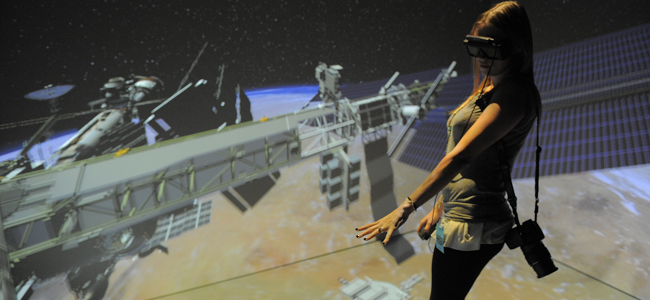Once upon a time teachers had to rely on taking students to culture, rather than bringing culture to them. These days, with more classroom technology than ever before, teachers can bring the whole world to their students without them ever leaving their desks. I certainly grew in the generation who were excited by this:
A TeachMeet comes in many guises. The first I attended was a gathering of ten teachers in a classroom. The second had an audience of eighty and a reception on board HMS Victory in Portsmouth. However, both gatherings were defined by the very simple concept of teachers sharing ideas and simultaneously building a professional learning network (PLN). Presenters can sign up for a two, five or seven minute presentation on a subject, usually associated with classroom practice. It is much the same as the TED model, where speakers have to distil an idea into a defined timeframe. It is a challenge to engage and communicate in a short time but it is thrilling when someone gets it spot on.
It is never easy to predict where things are going in the future, but my own attention is really focused on virtual classrooms. These are tools that allow people to present via the internet, and are becoming more and more sophisticated. My current-favourite tool is Adobe Connect. It allows me to present to users all over the world. I can talk through a PowerPoint presentation, play videos, show the participants the screen of my computer, share files with them, set up a chatroom and turn on the webcam so that the participants can see me. It really has a lot of potential. I have noticed that more and more organisations are coming into this territory.
With a plethora of edtech available to schools, it’s a great time to be studying Science. However, much of this learning risks being wasted if kids can’t apply it to real life, everyday examples. BPES are offering a variety of free resources to tackle this.

The BP Educational Service (BPES) is taking science out of the lab and into the real world with ‘Where's the Science in that?’, a set of new free resources for students aged 9 to 14. These resources have been designed to fit closely with the new National Curriculum for England. They also support the curricula for Scotland, Wales and Northern Ireland. The focus is on inspiring young people to see science in a new light. The interactive teaching resources are compatible with whiteboards, PCs, iPad and Android tablets.
As a PE teacher of many years, one area that I have traditionally struggled with was supporting students to be able to write high-quality extended essays for the A2 exam paper. I always seemed to struggle with the ability to help students write concisely, using technical language and actually answer the question that was posed rather than the question they wish had been posed!
John Dewey, probably the most influential of all American philosophers, was born in Vermont in 1859. After graduation from the University of Vermont he received a PhD from The John Hopkins University and taught at a number of major universities, gaining an international reputation for his contribution to the pragmatic approach to philosophy (Dewey, 1938).
Teachers often excel at opening up new worlds for learning all in their pupils’ minds. If they want to go one step further, says AVonics director John Marsh, they can try immersive environments...

The last five years have seen a dramatic change in the way we receive and process information. We rely on the digital world for news, questions and opinions. So why should our teaching environment be any different?
Children in school grow emotionally, as well as physically and intellectually. A child’s ability to understand his or her own individual emotional growth is formally known as Social Emotional Learning (SEL). The Collaborative for Academic, Social, and Emotional Learning (CASEL) defines this competency as “the process through which children and adults acquire and effectively apply the knowledge, attitudes and skills necessary to understand and manage emotions, set and achieve positive goals, feel and show empathy for others, establish and maintain positive relationships, and make responsible decisions.”

A community-driven platform for showcasing the latest innovations and voices in schools
Pioneer House
North Road
Ellesmere Port
CH65 1AD
United Kingdom